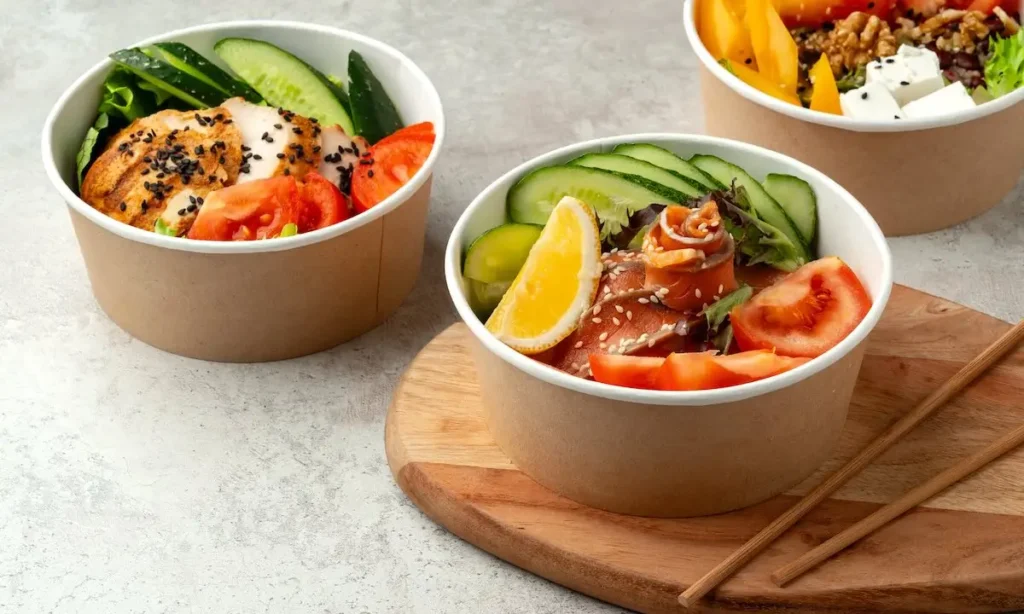Buying a restaurant franchise in 2025 can be one of the smartest ways to launch a business without starting from scratch. With fast-casual chains, automation, and ghost kitchens reshaping how we eat, franchise opportunities have grown in both size and variety.
Today’s trends lean toward healthy, customizable meals served fast, without sacrificing quality. That makes modern concepts like poke bowls, smoothie bars, and plant-based eateries some of the most sought-after formats for first-time business owners.
Whether you’re drawn to the hustle of a food court, the ease of a delivery-based model, or the vibrant experience of serving health-conscious customers, franchising offers a path forward.
Why More Entrepreneurs Are Choosing Restaurant Franchises

Franchise restaurants continue to dominate the dining space. Here’s why more people are jumping in:
- Demand remains strong:
People are still eating out, but many prefer quick, off-premise options like takeout or delivery.
- Franchises are resilient:
These businesses often perform better than independents during tough economic times.
- Built-in support:
Owners benefit from brand recognition, tested systems, training, and ongoing help.
- No need to reinvent the wheel:
It’s ideal for those who want to run a business with clear guidance, cutting out the guesswork.
Who Thrives in a Franchise System vs. Who Might Struggle
Before committing to a restaurant franchise, it’s important to weigh the pros and cons. Franchises work best for those who enjoy structure, collaboration, and consistency. But they may feel limiting for people who want full creative freedom.
Advantages
- Proven business model and operations
- Established brand identity and loyal customers
- Initial and ongoing training with support for marketing, hiring, and logistics
Disadvantages
- High upfront investment compared to starting a pop-up or food truck
- Limited ability to make changes to the menu or branding
- Required royalty fees and ongoing obligations to the brand
What It Really Costs to Start a Franchise

Starting a franchise restaurant isn’t cheap, but understanding the breakdown helps. Common costs include:
- Franchise fees (typically $20,000–$50,000)
- Build-out and equipment
- Staff training and hiring
- Initial marketing and promotions
- Inventory and supplies
Total costs can range from $100,000 for smaller concepts to over $1 million for full-service restaurants.
Poke Bowl franchises, for example, fall on the lower end. As a fast-casual concept with a simple kitchen model, they offer healthy food with fewer moving parts, meaning lower overhead and faster setup times.
Can You Buy a Franchise Without Start-Up Capital?
Buying a franchise without full start-up capital is possible, but it requires careful planning. Many new owners explore financing options such as SBA or small business loans, franchisor-backed payment plans, partnering with investors or co-owners, or using 401(k) rollovers and home equity loans to get started.
How to Buy a Restaurant Franchise
Follow these steps to move from interest to ownership:
- Research the restaurant franchise market
- Choose your niche (healthy, fast-casual, coffee, etc.)
- Request the FDD (Franchise Disclosure Document) to understand details
- Explore financing and secure funding
- Apply and interview with the franchisor
- Attend discovery day to meet the team and see operations
- Sign the franchise agreement
- Complete training and open your location
What to Look for in a Restaurant Franchise

A good franchise offers more than just a strong name. Look for a clear FDD, solid support with hiring and operations, and low failure rates among current owners. Make sure there’s demand in your area and flexibility in location type, whether that’s a ghost kitchen, food court, or storefront.
Mistakes First-Time Franchisees Often Make
Not all franchise opportunities are created with long-term success in mind. Red flags like poor support from the franchisor, unclear profit margins, or an oversaturated market can lead to disappointment.
Watch out for these common missteps:
- Skipping the FDD: This document outlines your obligations and rights; review it closely before committing.
- Underestimating costs: Budget for more than just the franchise fee; monthly expenses add up quickly.
- Neglecting local research: Understand the foot traffic, competition, and demand in your specific area.
- Rushing your decision: Take time to evaluate the brand, speak with current owners, and assess your fit.
Self-Assessment: Are You Ready to Franchise?
Use this checklist to assess your readiness:
- I have access to capital or know how to get it
- I’m comfortable following systems and guidelines
- I’m ready to be hands-on in the beginning
- I’ve spoken with other franchisees and done my research
- I understand the legal and financial responsibilities involved
Tips for Success in Restaurant Franchising

- Follow the model, but stay curious and proactive
- Build a great team and set the tone for company culture
- Track performance and make data-driven adjustments
- Learn from other franchisees in your network
Why Poke Bowl Is a Smart Franchise Choice in 2025
If you’re looking to own a franchise in 2025, Poke Bowl is one to watch. With lower start-up costs than many traditional fast food chains, a simplified setup process, and a brand built around customizable, health-focused meals, it fits today’s fast-casual dining trends.
Poke Bowl United franchisees benefit from hands-on training, ongoing support, and the flexibility to grow in a variety of locations. For first-time owners or investors seeking a scalable, modern concept, it’s a promising path.
Want to dig deeper into franchise selection? Read this next: What Makes a Good Franchise to Own: 5 Factors to Consider



